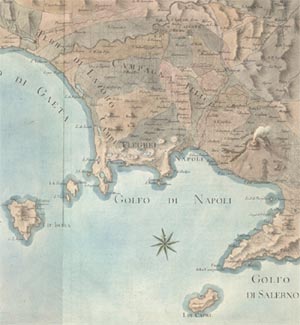Under the viceroys, Naples rose from 100,000 to 300,000 inhabitants, becoming the second most populous city in Europe after Paris.
The most important of these rulers was Pedro Alvarez of Toledo: he undertook important works, favored the search, but at the same time improved the conditions of life in Naples: opening the main street which today still bears his name , paving a few streets, strengthening the walls, erecting new buildings and rebuilding the old ones.
In the 16th and 17th century Naples housed great artists such as Caravaggio, Salvator Rosa and Bernini, philosophers like Bernardino Telesio, Giordano Bruno and Tommaso Campanella, and writers such as Gian Battista Marino, confirming its European importance.
Naples has become increasingly overcrowded, stifling, the Spanish regime is authoritarian. The situation broke out in July 1647, when the legendary Masaniello pushed the crowd into a violent rebellion against the foreign regime.
The Neapolitans declared the Republic, they called to France to support them, but the Spaniards repressed the insurrection in April of the following year and caused two French landing attempts to fail.In 1656 the plague killed almost half of the inhabitants of Naples. It’s the beginning of a long, dark period for the city.
Subscribe
Login
0 Commentaires


